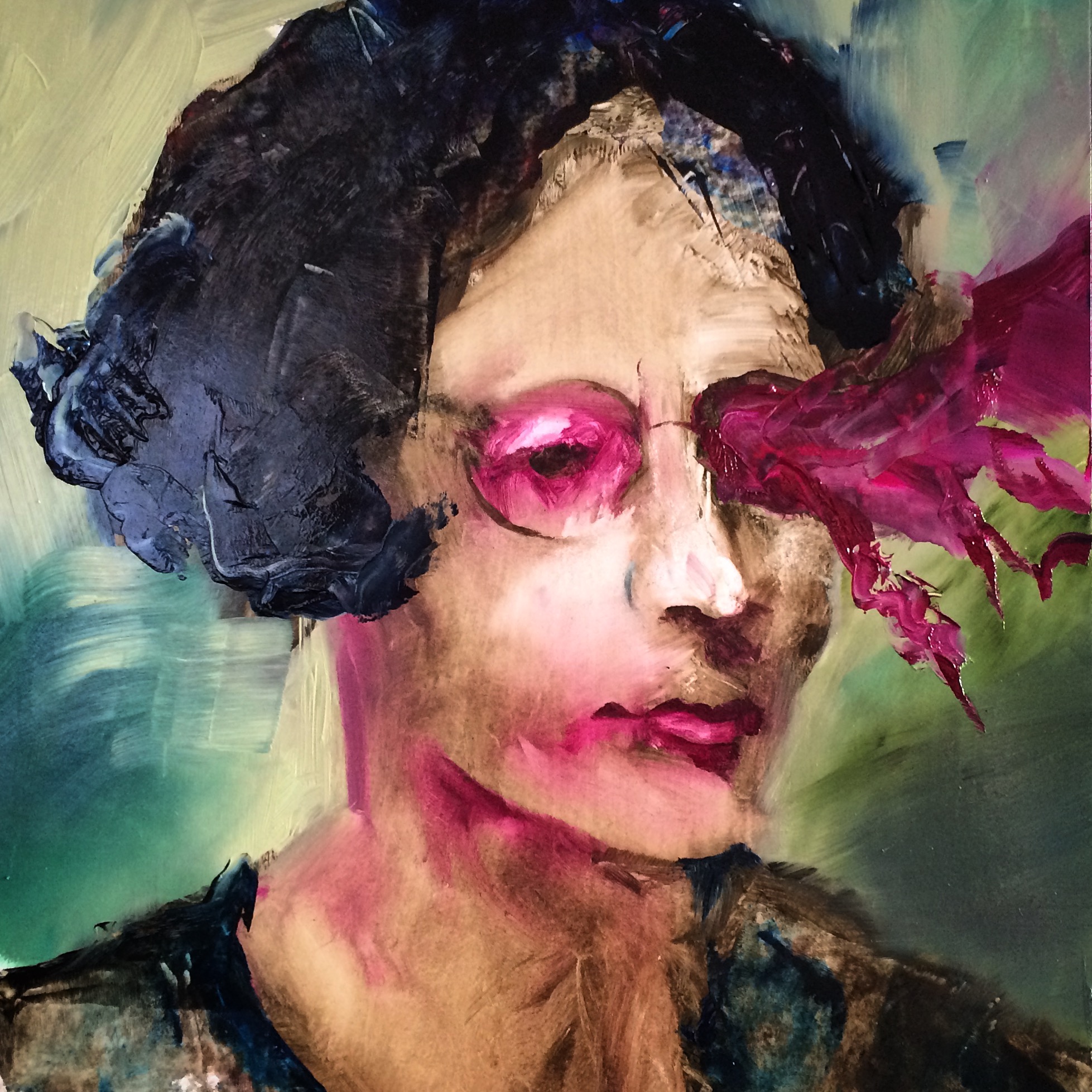“Imagination and fiction make up more than three quarters of our real life. “
Simone Weil was a French mystic and social philosopher, whose posthumously published works had particular influence on French and English social thought. Intellectually precocious, Weil also expressed social awareness at an early age. At five she refused sugar because the French soldiers at the front during World War I had none and aged 10 she declared herself a Bolshevik. After completing her studies in philosophy, classical philology, and science, Weil taught philosophy in several girls’ schools from 1931 to 1938 and often became embroiled in conflicts with school boards as a result of her social activism.
Simone Weil, 2018 Oil on Canvas 200x170 cm (Available for Sale)
To learn the psychological effects of heavy industrial labour, she took a job in 1934–35 in a Renault car factory, where she observed the spiritually deadening effect of machines on her fellow workers. In 1936 she joined an anarchist unit called the Durriti Column near Zaragoza, Spain, training for action in the Spanish Civil War, but after an accident in which she was badly scalded by boiling oil, she went to Portugal to recuperate. Soon thereafter Weil had the first of several mystical experiences, and she subsequently came to view her social concerns as “ersatz Divinity.” On returning to Paris, Weil continued to write essays on War, Peace, Labour and Management. She was one of the first to identify a new form of oppression not anticipated by Marx, where élite bureaucrats could make life just as miserable for ordinary people as did the most exploitative capitalists
Simone Weil, 2018 Oil on Canvas 85x70 cm (Available for Sale)
After the German occupation of Paris during World War II, Weil moved to the south of France, where she worked as a farm servant. She escaped with her parents to the United States in 1942 but then went to London to work with the French Resistance. The exact cause of her death remains a subject of debate. Malnutrition and overwork led to a physical collapse, and during her hospitalization she was found to have tuberculosis. She died after a few months spent in a sanatorium.
Some claim that her refusal to eat came from her desire to express some form of solidarity toward the victims of the war. Others think that Weil's self-starvation occurred after her study of Schopenhauer who in his chapters on Christian saintly asceticism and salvation, had described self-starvation as a preferred method of self-denial.
Simone Weil, 2018 Oil on Paper 28x28 cm (Available for Sale)
Weil’s writings, which were collected and published after her death, fill about 20 volumes. Though born of Jewish parents, Weil eventually adopted a mystical theology that came very close to Roman Catholicism. A moral idealist committed to a vision of social justice, Weil in her writings explored her own religious life while also analysing the individual’s relation with the state and God, the spiritual shortcomings of modern industrial society, and the horrors of totalitarianism.




